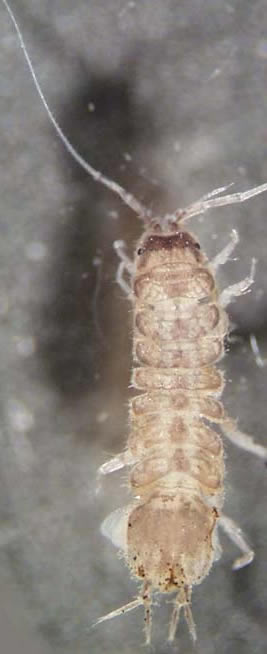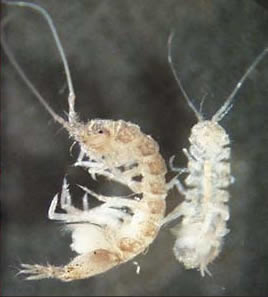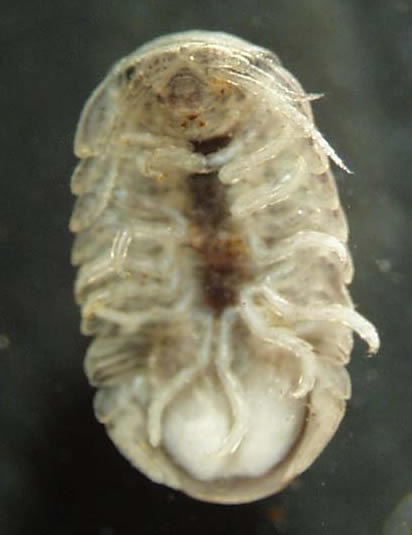
THE XERCES SOCIETY FOR INVERTEBRATE CONSERVATION Aquatic Invertebrates in Pacific Northwest Freshwater Wetlands |
| Identify taxa |
Isopoda |
|
| Caecidotea The legs and antennae are long and prominent; the body segments are not tight fitting; the front edge of the head is fairly straight (no large bumps); usually have eyes |
    |
||
| Isopoda uncommon in wetlands: | |||
| Gnorimosphaeroma Much of the legs and antennae are usually hidden under the tightly fitted segments of the body when viewed from above; found primarily in estuarine habitats |
   |
||
| Calasellus/Salmasellus Do not have eyes or pigmented color - uncommon, hyporheic, and usually immature |
|||
| List of Genera : Caecidotea (most common - includes species that were in the genus Asellus) Calasellus/Salmasellus (hyporheic - encountered mostly as juveniles) Gnorimosphaeroma (estuarine habitats) |
|||
© 2007 Xerces Society
Contact info@xerces.org